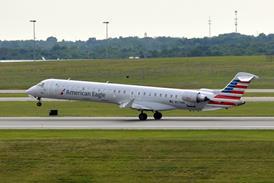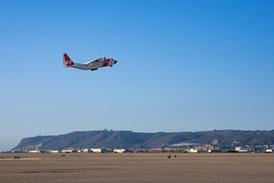Barely four months ago, US general-aviation aircraft manufacturers were celebrating a record year and looking forward to another bumper harvest of orders and deliveries this year. Then the US economy hit the skids.
Now Cessna is laying off a quarter of the workforce at its single-engine aircraft plant and Raytheon looks likely to reduce production of its King Air and Beechjet business aircraft in the face of slowing sales. Has the general aviation boom turned to bust?
The signals are mixed. During the first quarter, at the same time as aircraft makers started to see sales leads dry up, fractional ownership operators saw a quickening of interest in buying shares in business jets. And as manufacturers began to consider lowering their production rates, United Airlines exploded on to the fractional ownership scene with plans to operate 200 aircraft by 2005.
Signals are mixed because there are many different factors at work. On the downside, the dot.com implosion has slashed the buying power of many prospective aircraft purchasers. While wealthy individuals are keeping a warier eye on their discretionary spending, corporations are exercising caution in capital expenditure as sales and profits suffer. On the upside, the airline travel experience shows few signs of improving as another summer of delays and discontent is forecast for passengers. United has concluded, and other carriers are discovering, executive travellers are deserting the airlines in droves, and turning instead to business jet chartering and fractional ownership.
The airlines are helping business aviation in other ways. The growing commercial pilot shortage is drawing students into flight schools, and providing income to underwrite the renewal of fleets that have aged significantly since the last buying peak, in the 1970s. Recent contract settlements that have boosted mainline pilot salaries, and could send regional pilot wages skywards, can only help fuel the flow of students.
Against this background, general aviation's current difficulties may prove to be transitory. This is an industry that knows the meaning of the word recession, after all, and none of the indicators so far suggests that general aviation aircraft manufacturing is heading back to its historic lows of the 1980s.
This is also an industry that knows a thing or two about lifting itself out of recession by stimulating demand with new products. After taking a breather last year (aside from Raytheon's unveiling of the Hawker 450 mid-size jet), manufacturers are expected to unveil a slew of new designs over the coming months.
But the biggest stimulant of demand by far has been fractional ownership. Pioneered as long ago as 1986, fractional ownership is rapidly becoming the dominant sector of business aviation. And it appears to be changing both the perception and the mechanics of general aviation.
Increasingly, aircraft shares are being used as incentives to attract and retain executives. One reason is peer pressure - most fractionals still rely on referrals for sales leads. Another is the sorry state of the airline industry. In one recent example, a New York broker wrapped the cost of a one-eighth share in a business jet into the mortgage on his new multimillion-dollar house in Florida so he could commute without ever going near an airline or major airport.
United's move into fractional ownership comes after the airline realised the top executives at companies with which it has corporate travel deals worth tens of millions of dollars had not flown with the carrier for several years. The airline hopes to leverage those same corporate deals to persuade the companies to buy fractional business-jet shares for their executives, to contract with United for corporate shuttle service and to provide on-demand charter service.
It remains to be seen whether United can, as it claims, offer a level of service beyond that provided by existing fractional operators. Executive Jet's NetJets, Bombardier FlexJet and Raytheon Travel Air are tough acts to follow. But United's venture comes as a fillip for manufacturers. Fractionals already account for 15% of business-jet orders and, with other sources drying up, airlines provide a welcome, if unexpected, new market. Conditions may not be ideal, but there is no need for panic yet in the general-aviation industry.
Source: Flight International























